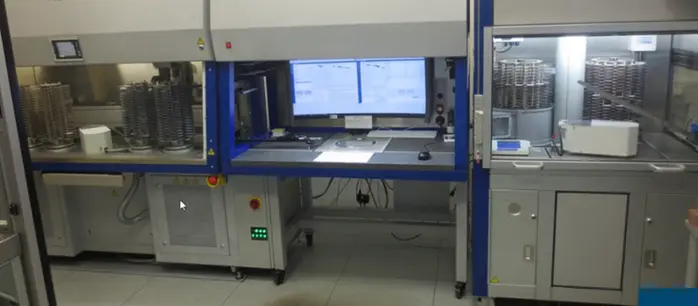Customer
Our Austrian-based customer, a global manufacturer of test and measurement equipment for vehicle emission testing, faced the challenge of efficiently managing the weighing process for carbon sludge filters. With a focus on automated robotic systems, our customer required a dispatcher to control load distribution and enhance overall efficiency.
Challenge
In the complex vehicle emission testing process, determining carbon sludge amounts on filters involves weighing a large number of filters with varying sizes and densities. Legal requirements, specific test conditions, and priority-based weighing queues added complexity. The customer sought an automated solution to increase efficiency and prevent errors in the weighing process.
Our customer needed a dispatcher with the following capabilities:
- Uniform loading in automatic mode;
- Manual mode for correcting scale loading;
- Seamless integration with the customer's automated test system.
Solution
Applied Systems engineers thoroughly analyzed the requirements, operating scenarios, and proposed a dispatcher for load distribution control. Integration into the customer's control software was recommended for a streamlined solution. The dispatcher's functionality, graphical user interface, and interfaces with the automated test system were developed to meet the customer's needs.

Dispatcher functionality:
- Automated Load Distribution: Ensures equal distribution of the robot load in automatic mode, speeding up the weighing process;
- Manual Mode Control: Allows the operator to manually adjust scale loading, ensuring flexibility and control;
- Integration with Automated Test System: Seamless integration with the customer's automated test system, optimizing overall equipment performance.
.webp)
Operational process:
- The control program manages robots, configures equipment, monitors ambient conditions (temperature, humidity, dew point, pressure) in the weighing chamber, evaluates data compliance with legal requirements, and exports data to the automated test system.
- Operators schedule test orders, and the dispatcher configures equipment based on the received data, controlling load distribution between robots in real time.
Results
Our team successfully implemented the customer's requirements within the specified timeframe. The integrated dispatcher optimizes equipment usage, reduces the system operator's workload, and minimizes errors in the filter weighing process. The real-time graphical user interface provides enhanced control and flexibility, ensuring efficient and error-free operation of the filter weighing robotic system.
